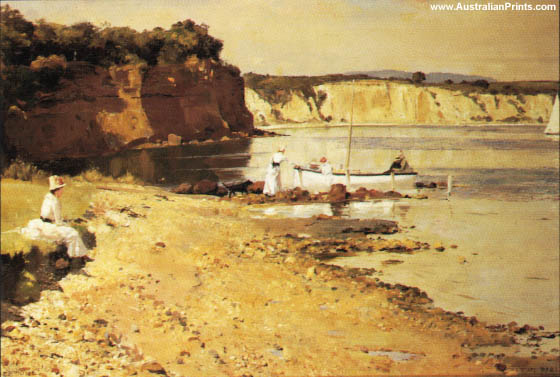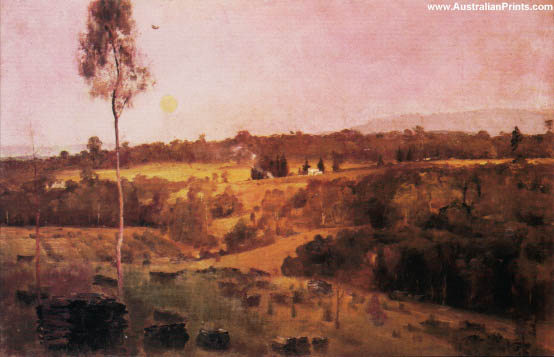8 March, ON THIS DAY
An iconic figure in Australian art history, Thomas William Roberts (1856–1931) is most known for having played a crucial part in the growth of Australian Impressionism. Roberts, who was born in Dorchester, England, moved to Australia with his family in 1869. There, he became a key member of the Heidelberg School, which is closely associated with the Australian Impressionist movement.

Roberts’ artistic journey was marked by a fusion of influences drawn from his English heritage and the vibrant Australian landscape. Initially trained in Melbourne, he embarked on a transformative journey to Europe, where he immersed himself in various artistic movements, absorbing techniques and perspectives that would shape his own artistic vision. Upon his return to Australia, Roberts brought with him a newfound appreciation for plein air painting, a technique he employed to capture the essence and vitality of the Australian environment.

At the heart of Roberts’ oeuvre lies a profound engagement with the Australian landscape. His works, characterised by their vibrant colors and dynamic compositions, offer a vivid portrayal of the unique light and atmosphere of the Australian terrain. Roberts had an uncanny ability to infuse his paintings with a sense of immediacy, transporting viewers to the very heart of the Australian experience. Whether depicting bustling urban scenes or serene rural vistas, his canvases pulsate with life, inviting viewers to immerse themselves in the beauty and diversity of the Australian landscape.

One of Roberts’ most celebrated works, “Shearing the Rams,” encapsulates the quintessence of his artistic vision. Painted in 1890, this masterpiece captures the rhythmic energy of sheep shearing, a quintessentially Australian pastoral activity. Through his masterful manipulation of light and colour, Roberts infuses the scene with a sense of dynamism and vitality, transforming a seemingly mundane subject into a captivating tableau of Australian life.

In addition to his landscape paintings, Roberts was also a skilled portraitist, capturing the essence of his subjects with a rare sensitivity and insight. His portraits, imbued with a sense of psychological depth and emotional resonance, offer a compelling glimpse into the inner lives of his sitters, transcending mere likeness to evoke a profound sense of human connection. Beyond his artistic achievements, Roberts played a pivotal role in shaping the cultural landscape of Australia. A passionate advocate for the arts, he was instrumental in the establishment of the Art Gallery of New South Wales, laying the foundations for the preservation and promotion of Australian art for generations to come.
Anish Kapoor: The Ingenuity of Materials, Form and Structure, Impressions of Indian Culture





